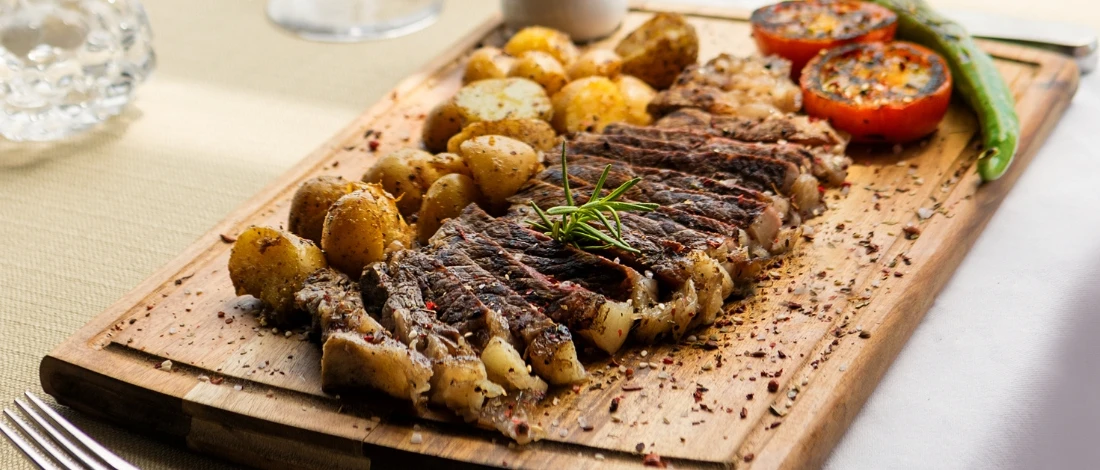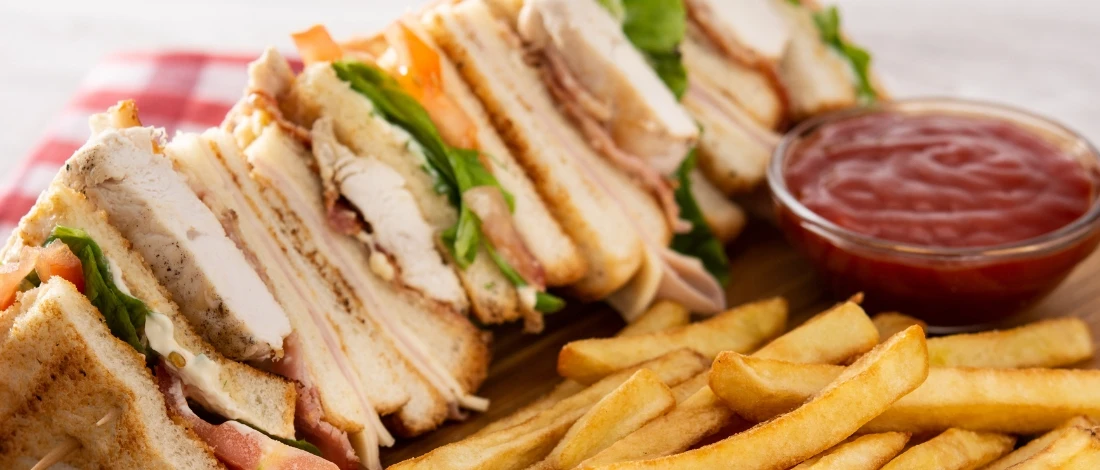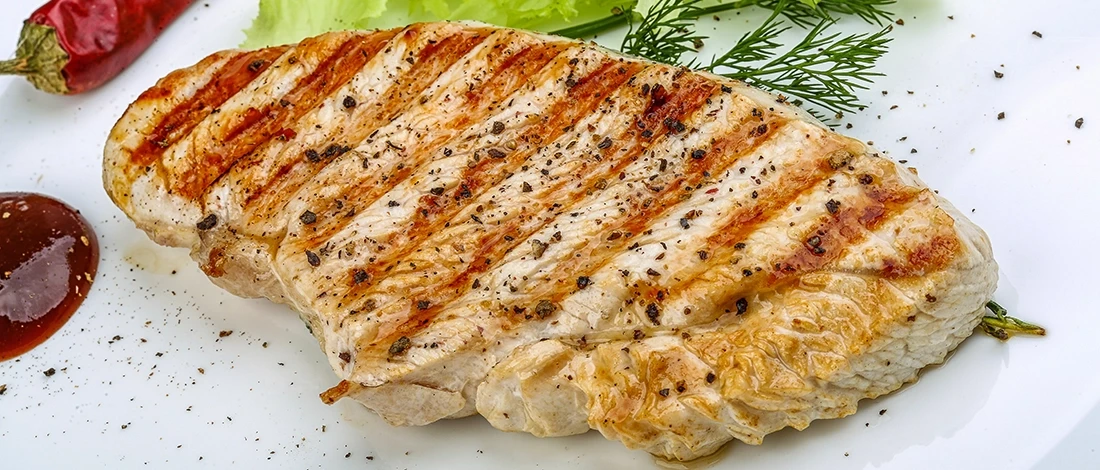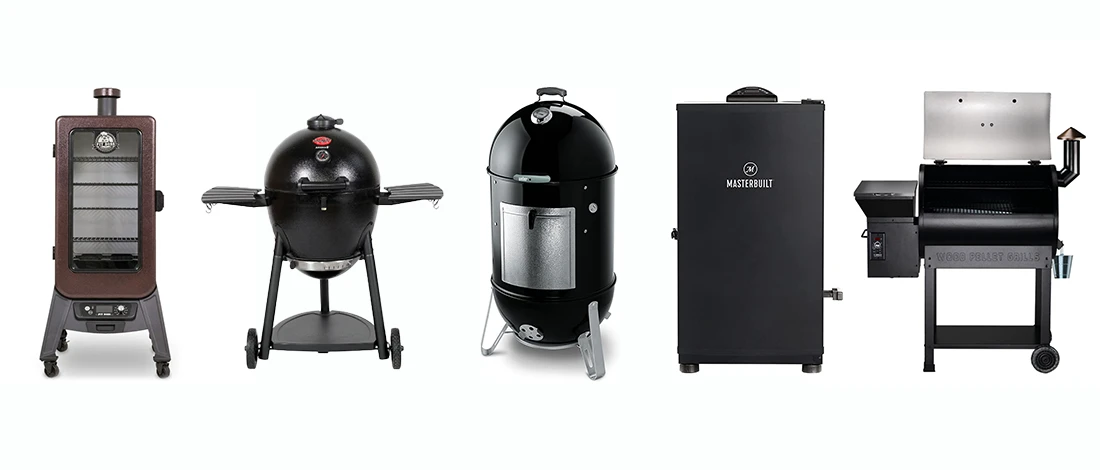Chicken is a great grilling and smoking meat, but the challenge for many with poultry is how to get the skin crispy.
So, it is essential to know the type of smoker or grill you will use. You can even use a cast-iron skillet or oven-safe skillet for your needs.
We have some advice from our expert grillers and smokers that will have you delivering crispy skin chicken every time at your cookouts!
Quick Summary
- Crispy chicken skin can be achieved on both grills and smokers with proper techniques.
- For grilling, defrost and dry the chicken properly, sear the skin on medium-high heat, then cook slowly on a cooler grill section.
- A study from 1983 in PubMed shows that slow-cooking chicken leads to more tender meat.
- For smoking, cook at higher temperatures between 300°F and 350°F to render the fat in the skin and avoid practices like spritzing and wrapping that keeps the skin from drying out.
Grilling or smoking chicken with the skin on helps keep the meat moist and adds flavor, but rubbery or soggy, slimy skin does nothing for the final product.
Follow our guidelines to get the skin on your chicken crispy and delicious on the grill or in the smoker!
How to Get Crispy Skin on a Grill?

Grilled chicken is one of the easiest ways to get the skin crispy, even without culinary education, but the biggest challenge is going too far on the opposite end of the scale and charring the skin to the point that it is inedible!
Some of the steps to get crispier skin come from preparing the meat correctly before cooking, and some are during the cooking process, so let’s get started with some crispy skin chicken on the grill!
1. Defrost Your Chicken Properly

If the chicken has not defrosted completely, moisture will be locked into the skin, preventing it from becoming crispy on the grill.
It is best to defrost your chicken overnight in the refrigerator. A medium-sized whole bird will take about 12 hours to defrost in the fridge.
Larger birds will take up to 24 hours in the refrigerator to thoroughly defrost, so you will need to plan.
Chicken pieces take about 6 hours to defrost, but our experts recommend still defrosting them overnight in the fridge or throughout the day if you intend to grill the chicken that evening.
Sprinkle the skin with sea salt toward the end of the defrost cycle to draw out any moisture. Wipe the salt off after the defrosting process.
2. Dry the Chicken Skin off Before Grilling
The chicken skin should have as little moisture on it as possible.
Pat any condensation or moisture off the chicken skin using paper towels. It is unnecessary to rub the skin; a basic pat-down is sufficient.
Removing as much moisture on the skin as possible will promote crispy skin when the chicken is placed on the grill.
3. Grilling Chicken for Crispy Skin
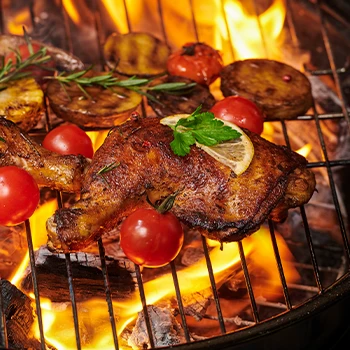
The next step is the actual cooking of the chicken on the grill. Dust the chicken with your favorite spices or rub.
Place the chicken on a hot grill section to get direct, medium heat. Sear the skin on medium-high heat for 3 to 4 minutes.
This tightens the skin side and removes moisture quickly. Turn the chicken frequently, watching for fire flare-ups when the fat drips out of the chicken skin.
After the initial searing, place the chicken on a cooler section of the grill where the meat can cook slowly and retain internal moisture. The good news is you don't need to use vegetable oil with this cooking method.
4. How to Get Crispy Chicken Skin After Marinating

If you intend to marinate your chicken before cooking it, this tip will help you to get a crispy skin side while allowing the meat to absorb the marinade flavor.
When chicken is steeped in a marinade, the skin side does not absorb any flavors.
Consequently, submerging the chicken skin in the marinade is not necessary.
Only fill the bowl with marinade to cover the meat and leave the chicken skin side exposed above the liquid.
This is not possible with chicken legs or drumsticks, but you can use this tip with chicken thighs and chicken breasts with the skin side on.
When you take the chicken out of the marinade, pat the skin dry with a paper towel and generously cover the skin with a sprinkling of salt.
Cook the chicken on the grill as usual, and the marinade will not affect the crispness of the skin side.
Related Articles:
How to Get Crispy Chicken Skin in a Smoker?
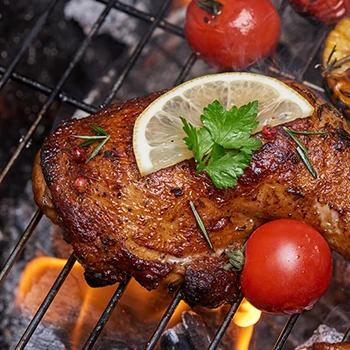
If you are smoking the chicken, attaining a crispy finish on the skin is considerably more challenging than on the grill.
The biggest problem when smoking a whole chicken is that the skin can come out rubbery and unpleasant to eat.
Chicken is considered lean meat, which means it does not have much fat embedded in the meat fibers.
The majority of the fat in chicken meat is in the skin. This is why the skin turns rubbery in a smoker, but the meat does not.
Traditionally, cooking meat in a smoker is a low and slow process at between 200 to 250°F [2]. However, this is the main problem when smoking chicken.
The fat in the chicken skin does not react well to a low and slow cook. The heat is insufficient to render the fat and allow it to escape the skin.
The lower temperatures allow the fats to solidify in place in the chicken skin, resulting in rough, rubbery skin.
The only way to avoid rubbery chicken skin in a smoker is to abandon the low and slow cook method and crank up the heat!
A study from 1983 in PubMed shows that slow-cooking chicken leads to more tender meat [1].
Chicken should be cooked in a smoker at temperatures between 300°F and 350°F, which will cause the fat in the skin to render, drip out, and crisp up the skin.
Increasing the heat will reduce the cooking time in a medium-sized bird smoker to between 1 and 2 hours.
More Tips for Crispy Chicken Skin in a Smoker

If you are familiar with smoking other meat but just starting with chicken, some practices that benefit other meats will be detrimental to crispy skin in the smoker.
You don't need to be a food stylist to know about these:
- Avoid spritzing the chicken. Spritzing is another smoking practice that keeps red meat cuts, like brisket, moist in the smoker. When smoking chicken, you should avoid spritzing altogether since this will prevent the skin from drying out.
- Use a dry rub. To add flavor, use a dry rub rather than a wet sauce.
- Don’t wrap the chicken. Other smoked meats are often wrapped in paper or foil during parts of the process. Please don’t do this with chicken; it will turn the skin soft and mushy, and the final cook will make the skin rubbery.
Cooking chicken in a smoker requires different techniques and strategies compared to red meat and pork done in a smoker.
You cannot apply the same strategy to the chicken that you have used on other meats in the smoker.
However, tweaking the process to the best way to smoke chicken will reward you with delicious smoky meat with crispy outer skin!
References:
- https://pubmed.ncbi.nlm.nih.gov/6619457/
- https://bbq.tamu.edu/cooking-smoking/


